Southwest Michigan field crops update – June 26, 2025
Corn and soybean growth accelerated with the heat. Wheat continued to ripen, and second cuttings of alfalfa started late last week.

Weather
High temperatures in the 90s with high humidity led into the weekend and continued throughout the early part of the week. Temperatures are expected to remain in the 80s over the coming week, keeping crop water demand high. Rainfall is forecasted for Thursday and Friday, with additional chances early next week.
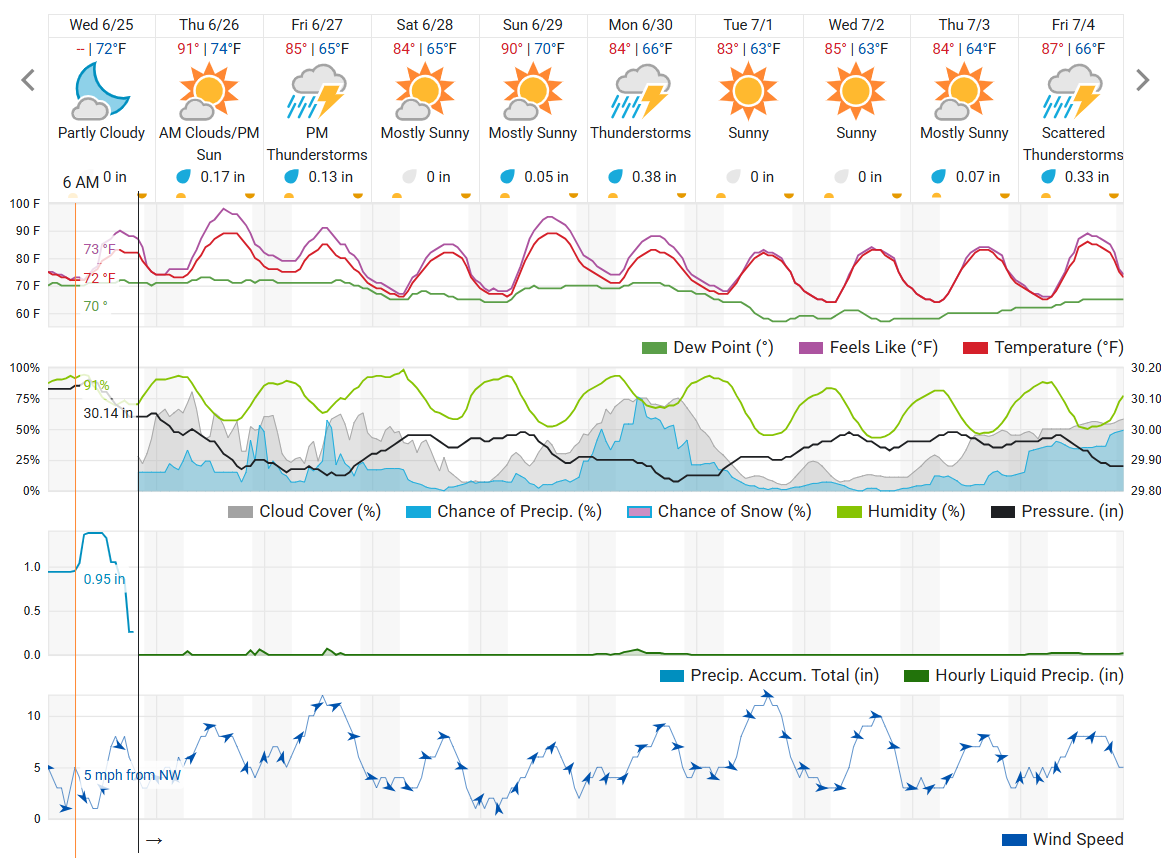
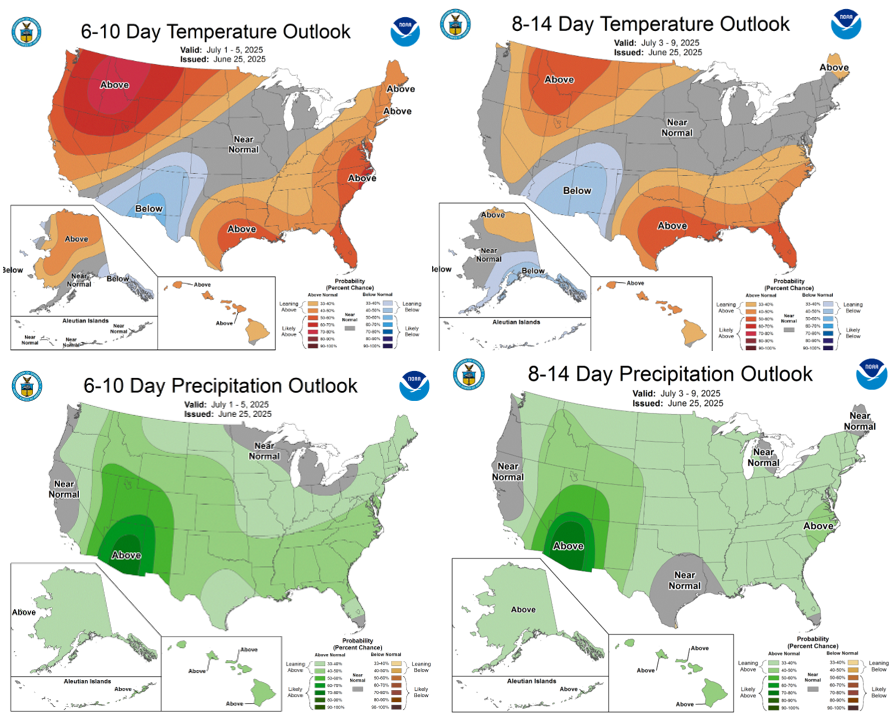
Crops and pests
Soybeans are mostly V2-V4. Some early-planted fields have plants entering reproductive stages. As flowering draws closer, the window for post-emergence herbicide applications narrows. Glufosinate can be applied until R1, and glyphosate can be applied through R1. Always check product labels before applying.

Corn is quickly making up for its slow start. On average it is around V6/7, although some fields are past V10. Sidedress nitrogen applications continued. Tar spot has been confirmed in many counties throughout the Midwest, but the best timing for a single fungicide application is still between VT and R3-4.
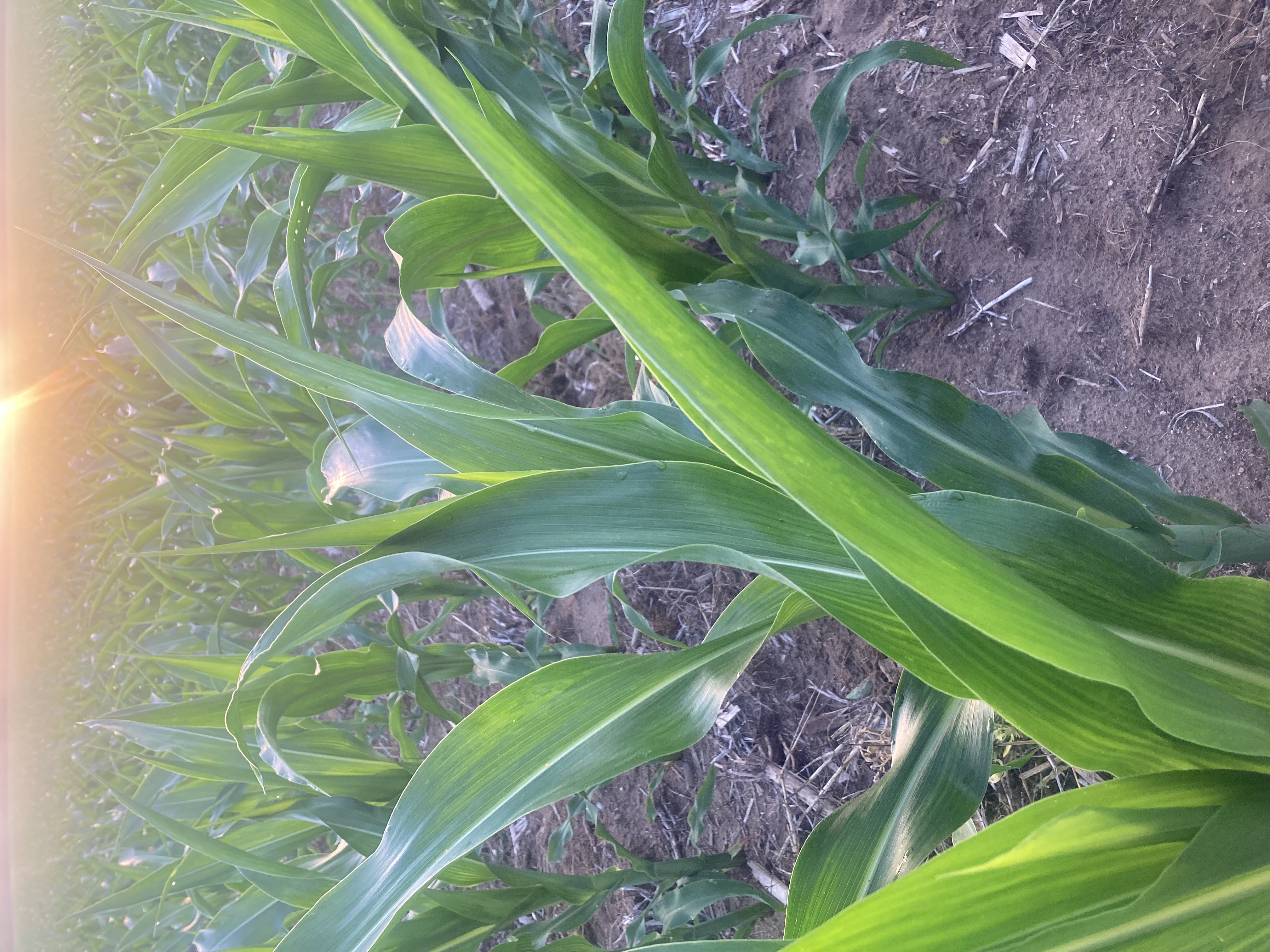
Winter wheat is at or approaching Feekes 11.2, at which point the heads lose their green color, and the kernel is soft and doughy. As wheat ripens, decisions on what to plant after wheat must be made. For those thinking of following wheat with soybeans, the article “Considering double-crop soybeans after a winter cereal this year?” addresses irrigation, planting, profitability and soybean management decisions to consider for double-cropping. For those thinking of following wheat with a cover crop, the Midwest Cover Crops Council has a cover crop recipe for planting after wheat going into corn or soybean, and the fact sheet “Cover crop tolerance to winter wheat herbicides” has helpful charts for cover crop sensitivity to common wheat herbicides.
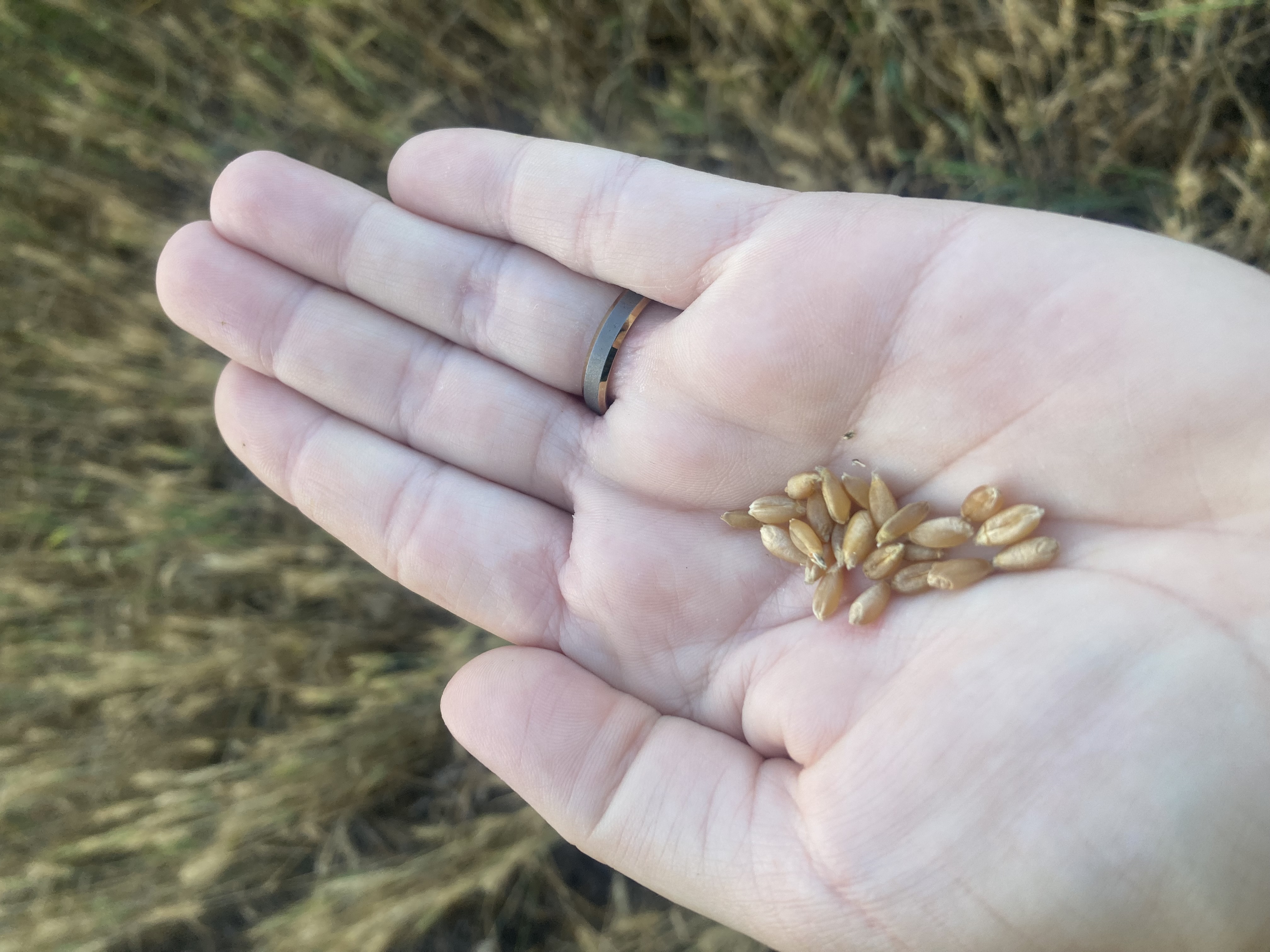
Several potatoes are at full flower, and most have closed rows. Fungicide applications are going out in earnest, and tubers continue to size up. Vine rot is starting in some varieties, and irrigation should be managed carefully to reduce rot risk and help the canopy dry out.

Cutting and baling of alfalfa (second cutting) and grass hay occurred late last week following the storms and continued through the weekend and into this week. Starting about a week after cutting, scout alfalfa regrowth for potato leafhopper. Hopperburn becomes visible after the damage has already been done and cannot be treated, so it’s important to actively scout for the insect itself. The article “Potato leafhopper on alfalfa” from PennState Extension contains in-depth alfalfa scouting information and economic thresholds based on hay value and insecticide costs.
Weekly water use
Crop water use remains high due to sustained warmer temperatures. Some irrigators have already applied water to help crops cope with heat stress and increased evaporative demand.
Estimated water use for corn currently ranges between 0.29 and 1.11 inches per week, depending on the growth stage. If rainfall is insufficient, irrigation may be necessary, particularly if signs of heat stress such as leaf rolling are observed. It’s important to note that some leaf curling during the day is normal; however, if symptoms persist into the evening or early morning, it could indicate water stress.
Soybeans at the V3 growth stage are using about 0.78 inches of water per week. However, for R1 soybeans it requires over an inch per week. Maintain adequate soil moisture in the active root zone and watch for early signs of stress such as grayish leaf coloration.
Wheat is currently in the soft dough stage, requiring approximately 1.30 inches of water per week (or about 0.19 inches per day). Warmer conditions have significantly increased water use.
With temperatures remaining in the mid-80s to 90s, evapotranspiration rates will stay high. It’s essential to monitor soil moisture closely and adjust irrigation accordingly. Irrigation Scheduling Tools, can help estimate crop water needs and decide timing and application.
Estimated weekly crop water use for field crops in Michigan (in/week) for the week of June 23-29, 2025
|
Crop |
Growth stage |
Constantine |
Entrican |
Hart |
|
|
Reference ET |
1.46 |
1.19 |
1.29 |
|
Corn |
V4 |
0.29 |
0.24 |
0.26 |
|
V6 |
0.57 |
0.46 |
0.50 |
|
|
V8 |
0.82 |
0.66 |
0.72 |
|
|
V10 |
1.11 |
0.90 |
0.98 |
|
|
Soybeans |
V1 1st Node |
0.44 |
0.36 |
0.39 |
|
V2 2nd Node |
0.73 |
0.59 |
0.65 |
|
|
V3 3rd Node |
0.87 |
0.71 |
0.78 |
|
|
R1 Beginning Bloom |
1.46 |
1.19 |
1.29 |
|
|
Wheat |
Jointing |
1.50 |
1.22 |
1.33 |
|
Boot / Heading / Flowering / Grain fill |
1.60 |
1.30 |
1.42 |
|
|
Soft Dough |
1.46 |
1.19 |
1.29 |
The table above presents estimated crop water use for various field crops across three locations in Michigan. This data helps irrigation management decisions by showcasing potential crop evapotranspiration, calculated based on reference evapotranspiration and crop coefficients for each crop growth stage. It is crucial to note that crop water use values vary across regions due to differences in weather conditions, growth stages, agronomic practices and soil properties.
When using these values for irrigation scheduling, be mindful that they assume all applied irrigation water will be utilized by the plants without any loss. Additionally, these values do not account for any precipitation that may occur during the week of calculation.
Reference evapotranspiration data was obtained from Michigan State University Enviroweather, which also offers a model for determining potential crop evapotranspiration. To access this tool, visit Enviroweather, click on "Crops," select your crop and use the potential evapotranspiration tool by choosing your nearest weather station, the latest date of interest and other crop information.
Field Crops Virtual Breakfast Series
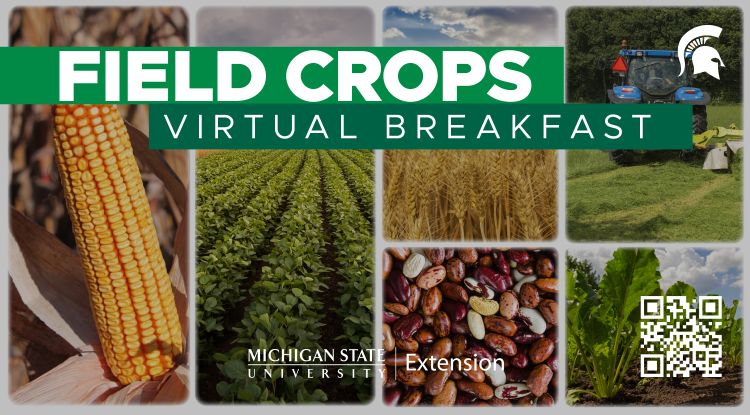.jpg?language_id=1)
Irrigation management, presented by Younsuk Dong, was the topic for the MSU Extension Field Crops Virtual Breakfast this week. Irrigation gives growers opportunities to optimize yields, but good management is essential for optimizing profitability and environmental stewardship.
Recordings of this and all the Virtual Breakfast meetings are closed-captioned and available at the Field Crops Virtual Breakfast webpage and the MSU Extension Field Crops Team social media platforms: Facebook, Spotify, YouTube, Apple Podcasts and Twitter/X.
This work is supported by the Crop Protection and Pest Management Program [grant no 2024-70006-43569] from the USDA National Institute of Food and Agriculture. Any opinions, findings, conclusions, or recommendations expressed in this publication are those of the author(s) and do not necessarily reflect the view of the U.S. Department of Agriculture.



 Print
Print Email
Email




